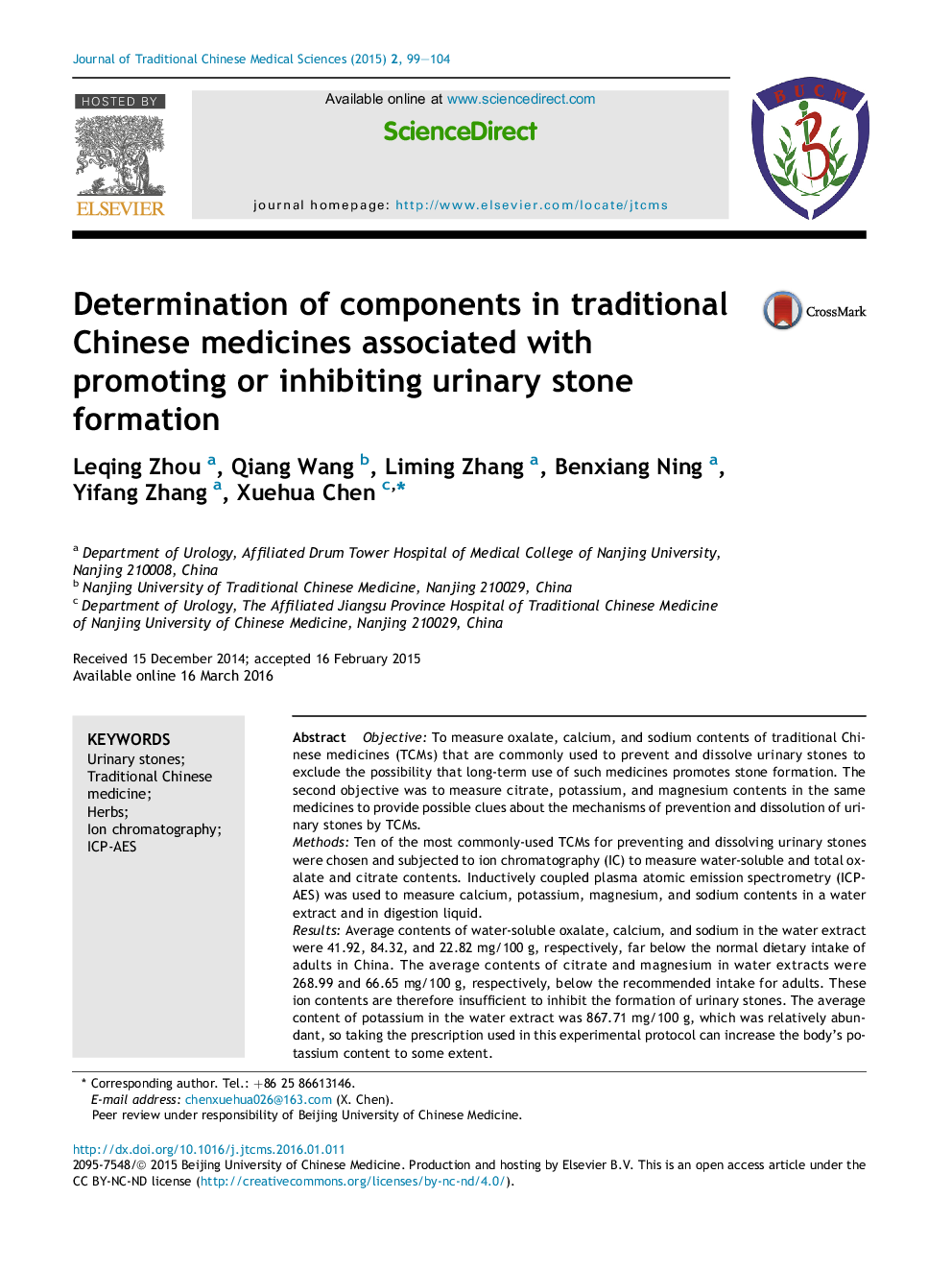| Article ID | Journal | Published Year | Pages | File Type |
|---|---|---|---|---|
| 1993119 | Journal of Traditional Chinese Medical Sciences | 2015 | 6 Pages |
ObjectiveTo measure oxalate, calcium, and sodium contents of traditional Chinese medicines (TCMs) that are commonly used to prevent and dissolve urinary stones to exclude the possibility that long-term use of such medicines promotes stone formation. The second objective was to measure citrate, potassium, and magnesium contents in the same medicines to provide possible clues about the mechanisms of prevention and dissolution of urinary stones by TCMs.MethodsTen of the most commonly-used TCMs for preventing and dissolving urinary stones were chosen and subjected to ion chromatography (IC) to measure water-soluble and total oxalate and citrate contents. Inductively coupled plasma atomic emission spectrometry (ICP-AES) was used to measure calcium, potassium, magnesium, and sodium contents in a water extract and in digestion liquid.ResultsAverage contents of water-soluble oxalate, calcium, and sodium in the water extract were 41.92, 84.32, and 22.82 mg/100 g, respectively, far below the normal dietary intake of adults in China. The average contents of citrate and magnesium in water extracts were 268.99 and 66.65 mg/100 g, respectively, below the recommended intake for adults. These ion contents are therefore insufficient to inhibit the formation of urinary stones. The average content of potassium in the water extract was 867.71 mg/100 g, which was relatively abundant, so taking the prescription used in this experimental protocol can increase the body's potassium content to some extent.ConclusionsLong-term use of TCMs would not increase the risk of urinary stone formation. The potassium content in TCMs is high, which is one possible reason for the prevention of urinary stones by TCMs.
